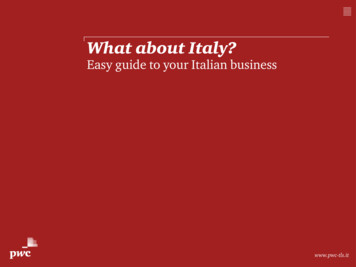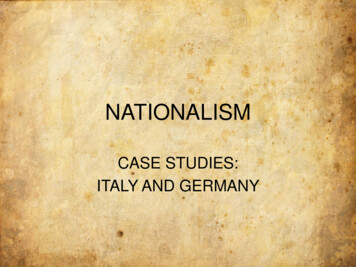
Transcription
NATIONALISMCASE STUDIES:ITALY AND GERMANY
NATIONALISM Nationalism is the belief that one’sgreatest loyalty should not be to a king oran empire but to a nation of people whoshare a common culture and history.When the nation also had its ownindependent government, it became anation-state.
BONDS THAT CREATE A NATIONSTATE NATIONALITY: A belief in a common ethnic ancestry –real or imagined. LANGUAGE: Different dialects (forms) of one language;one dialect chosen as the “national language”. CULTURE: A shared way of life (food, dress, behavior,ideals). HISTORY: A common past, common experiences (real orimagined). RELIGION: A religion shared by all or most of thepeople. TERRITORY: A certain territory that belongs to the ethnicgroups; its “land”.
Napoleon’s Family Rules!Jerome Bonaparte King of Westphalia.Joseph Bonaparte King of SpainLouise Bonaparte King of HollandPauline Bonaparte Princess of ItalyNapoléon Francis JosephCharles (son) King ofRomeElisa Bonaparte GrandDuchess of TuscanyCaroline Bonaparte Queenof Naples
NATIONALISM, A FORCE FOR UNITY:ITALY
ITALY After the Congress ofVienna (1815), the land ofItaly was still divided: - Austria ruled the Italianprovinces of Venetia andLombardy. The Spanish Bourbonfamily ruled the Kingdomof the Two Sicilies. Pope controlled the PapalStates (under Frenchprotection since 1848).
ITALY: LEADERS OFUNIFICATIONMazziniGaribaldiCavour
Mazzini:ITALY: LEADERS OFUNIFICATION– Formed a nationalist groupknown as “Young Italy” in 1832.– He called for an end to foreignrule and the unification of Italybased on the commonlanguage and culture of thepeople. The Italian nationalistmovement was called theRisorgimento (“resurgence”)– 1848: rebels failed and formerrulers of Italian states droveMazzini and other nationalistleaders into exile.
ITALY: LEADERS OFUNIFICATION Cavour:– Prime Minister of theKingdom of PiedmontSardinia.– Used diplomacy andalliances to increasePiedmont-Sardinianpower.– Would unify the North
ITALY: LEADERS OFUNIFICATION Garibaldi:– Leader of the RedShirts (Italiannationalist group thatgained control of Sicilyin 1860).– Would unify the Southand merge with North(under pressure)
ITALIAN UNIFICATION - 1859 Agreement between Italy(Cavour) and France (NapoleonIII) at Plombieres in 1858.Napoleon agreed to help driveAustria out of the northernprovinces of Lombardy andVenetia. Spring of 1859, Cavour provokeda war with Austria. A combinedFrench-Saridinian army won twoquick victories against Austria.Major battles were fought atMagenta (June 4, 1859) andSolferino (June 24, 1859) . They drove Austria out ofLombardia but failed to drivethem out of Venetia. France was given Savoy andNice in exchange for their help.
ITALIAN UNIFICATIONVictory over Austria awokenationalist feelings amongthe states of Central Italy.A plebiscite held in 1860,determined theincorporation into thekingdom of Sardinia of thestates of Parma, Modenaand Tuscany.
ITALIAN UNIFICATION - 1860 Secretly, Cavour was helpingnationalist rebels in southern Italy.However, he would not send thePiedmontese army. In May 1860, a small army of Italiannationalists (the 1000 Red Shirts),led by Giuseppe Garibaldi, sailedfrom Genoa and aided the Sicilianrevolts, forcing the Bourbon armyout of Sicily. From Sicily, Garibaldi crossed to theItalian mainland and successfullymarched north to Naples. After Garibaldi took completecontrol and became leader ofSouthern Italy the people voted in asecond plebiscite to unite with thenorth. (because Garibaldi received anultimatum from King Victor Emmanuel II– unify or go to war against us.)
ITALIAN UNIFICATION - 1861 In March 1861, a parliament of allof Italy except Rome and Venetia,agreed on unifying Italy with VictorEmmanuel II as its first king. Turin was the first capital,1861 Three months later Cavour died.Before dying, Cavour purportedlysaid: "Italy is made. All is safe."
But what about the Papal Statesin the middle? (oh, and Venetia and Rome?)1862 – Garibaldi sails for Romeintending to defeat it – he losesand is imprisoned briefly.1864 – Victor Emmanuel II meetswith Napoleon III and negotiatesthe withdrawl of French troopswithin 2 years.Florence became capital in 1864 1865
ITALIAN UNIFICATION In 1866, Italy joinedPrussia in a war againstAustria. When thePrussians won, Italy’sreward was Venetia.
When, in 1870, French troopswithdrew from Rome so theycould fight in the FrancoPrussian War; Italian forcesseized Rome Rome was declared Capital ofItaly, in 1871, after finalunification. However, Pope Pius IXrefused to acknowledge theItalian State and it was not untilMussolini came to power thatRome/Vatican finally“accepted” Italy.
Italian unity had at last been obtainedmore by diplomacy and astute timingthan by military greatness
CHALLENGES AFTERUNIFICATION Tension between the industrial north andagricultural south. Different ways of life. Different dialects of Italian. Disorganized political parties caused anunstable parliament. Strikes and riots in the south.Italy entered the 20th century as a poor country.
NATIONALISM, A FORCE FOR UNITY:GERMANY
GERMANY Following the Congress of Vienna, 39 German Statesformed the German Confederation. Austria and Prussiadominated the Confederation.
GERMANY Prussian advantages:– Mainly German population– Most powerful army in Europe (emerging)– Industrialized faster than other German states– Rich resources in the RhinelandFriendship between the two German stateswould turn to conflict in an attempt to unifyGermany.
GERMANY 1848: Democraticrevolutions broke outall over Europe. As a result, Prussiacreated a liberalconstitution to limitthe power of the King.
GERMANY: LEADERS OF THEUNIFICATION King Wilhem I (King ofPrussia)– Succeeded Frederick Williamto the throne in 1861.– Supported by the Junkers:» Wealthy landowning class» Strongly conservative andopposed liberal ideas.
LEADERS OF GERMANUNIFICATIONWilhem I– Wanted to increase the size and strength ofthe military (Parliament refused to give himthe money)– Decided to pick a new Prime Minister in orderto get what he wanted.
LEADERS OF GERMANUNIFICATION Otto von Bismarck(conservative junker):– Became PrimeMinister in 1862.
LEADERS OF GERMANUNIFICATION Bismarck:– Realpolitik (“the politicsof reality”): politics thanleave no room foridealism.– Known as the “IronChancellor” for hisrealpolitik and hispowerful rule.
LEADERS OF GERMANUNIFICATION Bismarck. First speech as prime minister to themembers of the Parliament:“Not by speeches and votes of the majority, are the greatquestions of the time decided — that was the error of1848 and 1849 — but by iron and blood.”Other quotes:– Hit the Poles so hard that they despair of their life; Ihave full sympathy with their condition, but if we wantto survive, we can only exterminate them; the wolf,too, cannot help having been created by God as heis, but people shoot him for it if they can.– A conquering army on the border will not be stoppedby eloquence.– Politics is not an exact science.– Politics is the art of the possible.
STEPS TO GERMANUNIFICATION 1864– Alliance between Prussia andAustria.– War against Denmark to wintwo border provinces:Shleswig and Holstein.– Quick victory. Prussiagoverned Schleswig andAustria, Holstein.
STEPS TO GERMANUNIFICATION 1866: Seven Weeks WarBismarck purposely stirred up border conflictswith Austria over Schleswig and Holstein.(Bismarck had negotiated a secret agreementbetween Italy and Prussia to help each otherand agreements of neutrality from France andRussia)The tensions provoked Austria into declaring waron Prussia in 1866.
STEPS TO GERMANUNIFICATION 1866: Seven WeeksWarThe war was overquickly. Prussiahumiliated Austria.The Austrians lostthe region ofVenetia (given toItaly).
STEPS TO GERMAN UNIFICATION 1866: Seven WeeksWarPrussia took control ofnorthern Germany. In1867, the remainingstates of the north,fueled by nationalistpride, joined a NorthGerman Confederation(dominated byPrussia)
STEPS TO GERMANUNIFICATION 1870-1871: The Franco-Prussian War
STEPS TO GERMANUNIFICATION 1870-1871: The Franco-Prussian War.– By 1867, a few southern German states remainedindependent of Prussia. Bismarck felt he could winthe support of Southerners if they faced a threat fromoutside: a war with France would rally the South.– He published an altered version of a diplomatictelegram he had received from France (Emstelegram). Wilhelm seemed to insult the French.Reacting to the insult, France declared war onPrussia on July 19, 1870.
STEPS TO GERMANUNIFICATION 1870-1871: The FrancoPrussian War.The Prussian armypoured into northernFrance, and inSeptember, theysurrounded the mainFrench force in Sedan.They took 80,000 Frenchprisoners (even NapoleonIII)
STEPS TO GERMANUNIFICATION 1870-1871: TheFranco-PrussianWar.For four months,Parisianswithstood aGerman siege.Finally, hungerforced them tosurrender.
STEPS TO GERMANUNIFICATION 1870-1871: The Franco-Prussian War.The Franco-Prussian War was the final stage inGerman unification. Now the nationalistic feveralso seized people in southern Germany. Theyfinally accepted Prussian leadership.
STEPS TO GERMANUNIFICATIONOver a six-yearperiod, Bismarckcreated a unitedGermany. Hemade skillful useof diplomacy andwarfare toaccomplish thistask.
STEPS TO GERMANUNIFICATIONJANUARY 18, 1871- Wilhem I is crownedKaiser (Emperor) at thePalace of Versailles(Picture)- Second Reich: namegiven to the newGerman Empire
THE BALANCE OF POWERSHIFTS The Congress of Viennaestablished five GreatPowers in Europe:Britain, France, Austria,Prussia and Russia. By 1871, however, Britainand Germany wereclearly the most powerful.The European balance ofpower had broken down.
ITALIAN UNIFICATION - 1860 Secretly, Cavour was helping nationalist rebels in southern Italy. However, he would not send the Piedmontese army. In May 1860, a small army of Italian nationalists (the 1000 Red Shirts), led by Giuseppe Garibaldi, sailed from Genoa and aided the
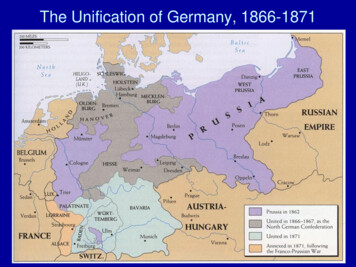





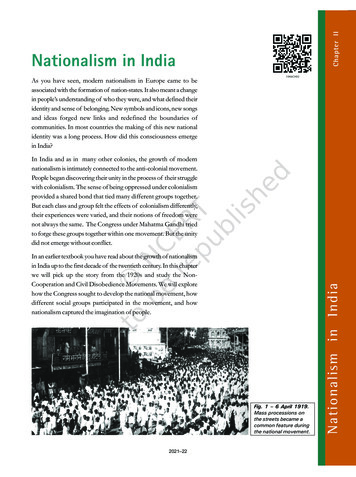
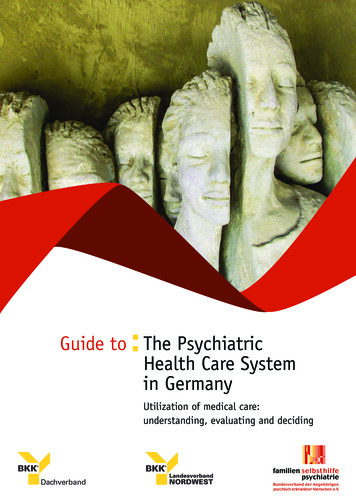
![The GIANO-TNG spectrometer [6269-46]](/img/1/spie-6269-46.jpg)

